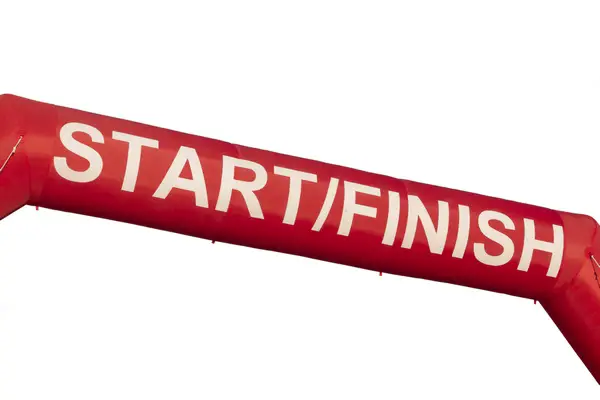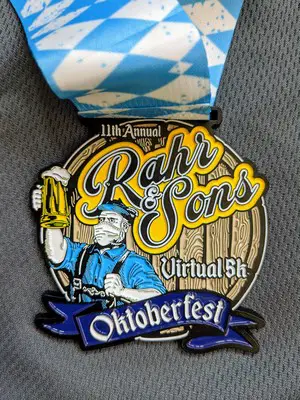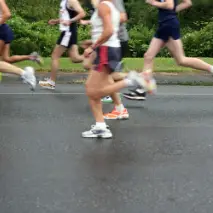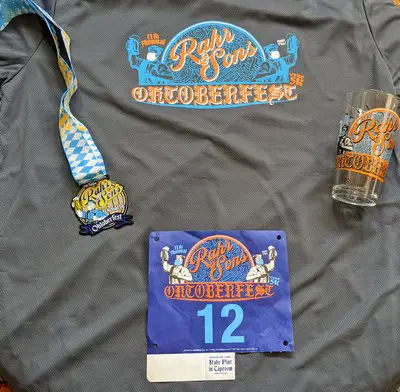Running your first 5k race should be fun. The mere fact that it’s your initial foray into road racing means you have already started down the path as a full-fledged runner. The mere thought that you decided to put words and thoughts into action and train for your first 5k means you have enjoyed the process of setting up a goal and smashing it!
It will be one of many tests along your path to achieving your fitness goals! Here are some great tips first-time 5K race runners like yourself would want to read and apply before registering for a first-ever 5k competition:
Before the Race
1. Decide where you’re going to race and sign up
In the USA, Runner America (link) has a list of 5K races near your zip code. If you can find a flat 5K race I would opt for that course, however since it’s only a 5K race (3.1 miles), a couple of hills won’t kill your race mojo.
Don’t hastily pick a 5K race that is going down in the next couple of weeks or so. You need time to train for your 5K so you don’t have a miserable race experience
Also, take note of the types of runners registered in the 5k run. Are they a competitive bunch or are they recreational runners just like yourself who is into the 5k for personal fitness? Would you rather rub elbows with runners who break records and be influenced by their perseverance? Or do you long for the camaraderie of runners who like to laugh together while pursuing personal health goals?
Running Events in Different Countries:
- Running in the USA
- Let’s do this – running events (UK)
- Running Calendar (New Zealand)
- Running Calendar (Australia)
Training For The Race
2. Running Shoes Are Important
Don’t wear brand new running shoes that haven’t been broken in yet. Make sure you’ve trained in your shoes and logged at least 50 miles before racing in them. Painful blisters and numb soles could be a regretful result of wearing new shoes.
On the flip side, don’t wear shoes that are too old and should be retired. A good rule to follow when it comes to retiring your shoes is to stop using them after about 400 miles of wear and tear. If you run with a shoe with less support you could find yourself more prone to injury especially since runner’s pace and performance usually peak during a race. Also, old shoes could suddenly break down (during the race) due to wear and tear by the separation of the rubber bottom from the main shoe body.
For a detailed post about running shoes and when you should retire them, check out: When Should You Retire Running Shoes?
3. Give yourself plenty of time to train
Depending on how much you’ve run prior to training for a 5K, you might need to adjust how many weeks to train for a 5K. I use these little rules to determine how long I should take to train for a 5K:
- Are you brand new to running? Consider a minimum of 8 to 10 weeks of training
- Do you run about 10 miles a week? Consider a minimum of 6 to 8 weeks of training
- Do you run about 20 miles a week? Consider a minimum of 4 weeks of training to obtain a new PR
Here are some great 5K training plans:
- Couch to 5K – this is probably the most popular 5K training plan out there and it’s free. Couch to 5K takes about 8 weeks to complete.
- 5K Fury – this is a book that I’ve written on 5K training which takes 9 weeks to complete and it’s completely adjustable depending on your fitness level.
- 8-week 5K training plan for beginners. Here is another training plan that throws speedwork into the training as well. Most new beginners don’t need speed work to finish a 5K. However, if you want to improve your 5K finish time someday, you will have no choice but to include speed work in your training.
4. If you need motivation and help join a running group or club
Association with folks who love running will inspire you to get out of your bed regularly to do road runs with them. If they are a fun group and you enjoy spending time together, even beyond the running grind, like having scheduled lunches or dinners together, you will be inclined to continue with your running habit for several years.
You can also share ideas with them on how to improve your running techniques and also to be updated with upcoming runs you can all join, including your first 5k run. If your running group has become quite large and popular, famous sports brands, spas, gyms, and other companies will visit your group and offer you discounts and special deals.
Related: What is a running club? How can it benefit my running?
5. If you don’t have enough time to train, consider walk/run intervals to complete your race
This is simply alternating between walk for a short amount of time followed by running for a short amount of time. Some common run/walk techniques are:
- Run 3 minutes – Walk 1 minute
- Run 4 minutes – Walk 1 minute
- Run 3 minutes – Walk 2 minutes
- Run 9 minutes – Walk 1 minute
For a detailed dive into the run/walk method of running, check out this post:
How to use the Run/Walk Method – A Complete Guide
If I have to use a run/walk interval technique, I always go with either run 4 minutes – walk 1 minute or run 9 minutes – walk 1 minute. I find that keeping track of the interval time in multiples of 5s is easier than the other non 5 multiples such as 3 or 4 minutes.
If you have a Garmin watch you already have Run/Walk Alerts/Intervals Built-In – check out this 1-minute video that shows you how to do this:
Check out my YouTube Videos For New Runners Here
Day Before The Race
6. Pick up your running packet early!
Always try to pick up your race packet early. Picking up the packet before race day serves many purposes. First off, you won’t have to wait in a super crowded line come race morning. Secondly, sometimes they give you a racecourse map showing the route of the race. By having your race packet on hand prior to race day you will relieve yourself of stress and allow more time for sleeping in on race day.
7. Prep your clothes the night before the race – Always!
It’s the night before your race so it’s time to prepare for tomorrow’s events. Set out all the gear you’ll need for your race. This includes, but is not limited to, your race shoes, socks, running shorts, running shirt, and anything else you’ll need for your race. Make sure you pin your bib on the front of your shirt or upper shorts (do not pin your shirt on your back).
Related: How To Attach A Race Bib Without Safety Pins

8. Check out the race route a couple of days before you race
It’s always a good idea to check out the 5k race route before your race day. Will there be hilly portions that require the extra stamina and oxygen intake from you? Will there be a lot of turns and detours which will make the possibility of you getting lost within the race a likely thing to happen? Are the roads you will run on smooth, full of potholes, slippery, or have wet portions? Are there danger zones like open manholes or open electrical wires on the route which will endanger the lives of the runners? Determining where the water/aid stations are on the racecourse can help you know which mile to expect water during your run.
Related: What Are The Rules For Running in The Park, Trails, Tracks, Roads, and Races?
9. Keep your diet in check
A 5k run is neither too short nor too long to rationalize you loading up on your carbo. It is not exhausting and strenuous enough for your body to demand an overload of tuna fettuccini the night before the race. Rather, enjoy a light and healthy meal with lean protein content, vegetables, and rice. The day before the race is not also the time to experiment on any new food intake that your stomach is not familiar with or you will suffer from a gastrointestinal emergency that will make you cancel your participation in the 5k that you have prepared so much for.
Also, hydrate well before and during the race. Most 5k runs have at least one or two water stations along the route. Never allow yourself to be dehydrated because it weakens you and leads to a possibility of a cramps attack, which can end your 5k. After the race, don’t reward yourself with a gluttonous eating binge which will put to waste all the hard work you have done to accomplish your running and diet goals. Still eat light and healthy.
Related: What is the best diet for runners? Keto, Paleo, or the Mediterranean?
Do not load up on carbs
Unlike the half marathon, marathon, and ultra-marathons you shouldn’t load up on carbs 48 hours before your race. Why? Because by the time you finish the race (average 5K race times between 30 and 45 minutes) all of the carbs you tried to preload won’t even be touched. Instead, the carbs will be stored in your glycogen stores rolling their eyes at you. Basically, all of that energy stored up, if not burned off well beyond the distance of a 5K, will turn into fat stores. Ugh!.
If you’re interested in all of the technicals about fueling for larger races, click here: How do you fuel for half and full marathons.
Do not bring extra fuel on the course – you won’t need it
Just like carb-loading, you will not and shouldn’t need extra energy (i.e. fuel). The only reason you would get hungry and need extra fuel is that you forgot to eat breakfast! Still even if you’ve forgotten to eat breakfast, the energy stored up in your legs muscles as glycogen should be enough to get you to the finish line in monumental time. I run on empty on any easy run less than 60 to 90 minutes and I never bonk (aka – hit the wall).
For a detailed post about the ins and outs of carb-loading check out:
What is carb-loading and why do long-distance runners do this?

Race Day
10. Wear Comfortable Clothes
During your training, you’ve worn bouts of clothing and more than likely have picked out a “go-to” set of clothes that are your lucky race clothes. For sure, you might have decided quietly that one outfit tandem you tried made you’re run so comfortably and effortlessly. Make a mental note about this, and take this gear combination aside and prepare them 2 to 3 days before the 5k race. Chafing should not be an issue since the distance is only a 5K, but if you’re prone to chaffing check out this post about what to use: How to Prevent Chaffing
11. Break down the 5K race distance into 3 parts
Running the entire distance of a 5k (3.1 miles) is both mentally and physically demanding. On the mental side, try to break down a 5K into 3 different miles. Mile 1, Mile 2, and Mile 3. Give yourself praises for every mile that you have run during the course of the race.
If you are wearing a smartwatch, you can easily track the distance you’ve covered. Being able to visually see your progress on your smartwatch will help make the 5K race a little more manageable both mentally and physically. If you don’t have a smartwatch or a phone, the race will have mile markers present at the 5K race so you can know how much further you have to run.
For a detailed review of the best-running watches that I compiled myself check out:
Best Running Watches To Race With
12. Warm-up before you race
It’s important to arrive early at the race venue before the 5k begins. Arriving 45 minutes before the race start should give you enough time to find parking and walk over to the starting area. If you haven’t picked up your bib, I would arrive at least 1 hour and 15 minutes before the race starts in case there is a long line at the registration table to get your race bib. Most important of all, you will still have ample time (once you have settled down) to do your warm-up exercises and stretching routines. You need to warm up for at least 5 to 10 minutes before attacking the road. Without appropriate preparation for the race, you put yourself at risk for injuries.
13. 5 minutes before the race close your eyes and meditate or visualize success
Take a few minutes and close your eyes before the start of the race. Visualize yourself finishing your first race. Imagine everyone at the finish line cheering your name and roaring victory shouts from afar. Try to visualize what it would feel like crossing that first 5K finish line. See yourself wearing the 5K finisher medal, who knows maybe even a first, second, or third finisher medal. Taste and smell the sweetness of accomplishing your 5K goal.
Now open your eyes. It’s time to race!
Are you looking for a great way to display your medals? Check out the post I wrote reviewing the 9 best medal display hangers for runners.
14. Start the race in the middle of the starting queue (corral)
This is a pre-race move wherein you will situate yourselves with other running enthusiasts in the middle of the pack. Unless you are an elite runner (sub 20 minute 5K race time), do not start out in the front of the race. If you start off in the front of the race and you’re not elite, you won’t make any friends, but you just might make plenty of enemies. Most runners in the middle pack (like you) are recreational runners who just want to live a healthy lifestyle, and running a 5k race is one element that makes them fulfill their objectives. People who start the race in the lead pack are competitive and chasing PRs and records.
Related: What Is A Running Race Corral?
15. Run at a comfortable pace
A good indicator that you are running at a pace that is within your oxygen intake limits is if you can still carry on a short conversation with a fellow runner. Don’t be tempted to sprint off the starting line just because the lead-pack runners all seem to be in a hurry. If you are running at a pace that’s beyond your normal pace, you might suddenly feel a pain in your ribs which will make you stop in the middle of the road – sometimes called a stitch in the side. Naturally, you will run faster during your 5K race because of excitement and adrenaline surging through your veins, just don’t overdo it.
That’s why it’s good advice to start the race in the middle pack because most runners in this group are recreational runners like you. Find the right rhythm and harmony while you are running until you find a sweet spot wherein you feel as if you are gliding and just enjoying the sights and the nice temperate weather. Being comfortable with your running pace is one of the best tips for the first-time, 5k race participant. Keeping your pace under control can make or break your race quickly.
16. Don’t forget about running form
Don’t stand straight up either when you run, lean slightly forward almost as if you’re slightly falling forward.
Head up
Keep your head up and straight looking at the horizon and slightly down to maximize your breathing economies. If your head is tucked into your chest you can hurt your neck and your breathing will be labored because of the awkward craning of your neck.
Feet
Your feet should land slightly in front of you to either side, not foot lengths in front of you (overstriding leads to injury).
Shoulders
Don’t tense up your shoulders and don’t forget to smile. If you smile when you run you’ll have a much better race.
Hips
Your hips shouldn’t twist at all. Your hips need to stay square with your feet pulling and pushing you through your running gait.
Arms
Your arms should be slightly bent and swing freely in front of you. Your arms shouldn’t extend beyond your belly button (or 90 degrees from the ground) on the upswing.
17. Be careful about wearing headphones
If you value your safety and other runners’ safety, don’t use these devices which greatly hamper your auditory awareness of your surroundings. If you do wear ear pods, find a pair that you can have only one paired (Jaybird Vistas do this) so that you can have a free ear to hear your natural surroundings, and one ear to listen to your desired race soundtrack. I went through about 4 different pairs of earbuds until I found the ultimate pair of Bluetooth earbuds called, Jabra Elite Active 75T – these earbuds are the best wired or wireless headphones/earbuds I’ve ever owned. Two hours of running through sweat and rain and these things never skipped a beat or moved at all in my ear. I’m not an apple product user so I haven’t tried out the Apple Air Pods (check price on Amazon).

When your 5k is conducted in a scenic location with a lot of trees and natural creation (colorful flowers, chirping birds, cows, chicken, ducks, geese on the roadside), you are inhibiting yourself to enjoy your environment which is perfect for your running lifestyle and for your psychological health which no electronic device can ever claim to lay an equal to. Running is an opportunity to be one with nature. Without earphones, you will be fully aware of any danger on the road like wayward vehicles that beep their horns (which you cannot hear while wearing earbuds).
If your racing competitively and/or for cash money you need to be careful about wearing headphones while you race. Some races could disqualify you if you’re caught wearing headphones/earbuds and you get first place and a cash price. Check out this post here for more details about Wearing Headphones during your races.
18. Have a backup plan
So what should you do if your wheels come off while you’re flying down the racecourse at top speed? Don’t panic! You can always switch to a run/walk interval technique to get you to the finish line. Don’t get down about it during your race. Hold your head high and push onward to the finish line. You also have the option of walking. If you’re like most runners, we wince at having to walk for prolonged periods of time during a race. However, you are still considered a race finisher as long as you walk, run, or even crawl across the finish line.
As a side note, in a walkathon, only walking is allowed and running is a mortal sin. But fortunately, this is a 5k run, and you are definitely allowed to walk. It is even a great way to avoid injury. And do you know that it is actually a running technique called the Galloway Method? This technique slowly increases your run time because it allows your body to slowly adjust to a faster pace over a longer distance.
19. Don’t forget that your fitness level plays a huge part in how successful your 5K race will be
On average, a runner who has put in a considerable quantity of time to run regularly, to rest appropriately, and to eat adequately should be able to finish a 5k in 45 to 60 minutes. You may have gone the extra mile in your fitness goals if you can complete the 5k in 30 to 40 minutes.
Post Race
20. Don’t stop moving for about 10 minutes after crossing the finish line
Keep walking for at least 10 minutes after crossing the finish line. Don’t forget to grab your medal as you walk through the race finish area. This will help your body cool down and ease the transition of your body in motion to a resting state. Perform some light stretches if needed after walking around for a bit.
21. Don’t forget to celebrate and refuel
Don’t overdo it with the food celebration. Your body needs to be refueled with nutrition but not at the level of a cheeseburger and fries. A simple banana and yogurt with some type of sports drink or protein bar will do the trick. Don’t forget to drink water.
Enjoy your shiny metal and take lots of celebratory pictures to post on your social media accounts. After all, you earned this victory!
| Help support me and subscribe to my YouTube channel. YouTube video - 30 ways to make your runs less painful! Coach Scott's Credentials:
|
To sign up for a FREE half marathon training schedule, log sheet, and pace predictor CLICK HERE.

Recommended gear for runners
Connect with me:
| facebook.com/BeginnerToFinisher/ |


